One of the most important decisions when building or renovating a home is choosing the right type of roof vent. Roof vents, which are short for roof ventilation, are essential parts of the roofing system. They stop the roof from overheating during the summer and stop moisture from building up during winter.
There are different roof vents today, each varying in functionality but with one goal or task, which is to promote good airflow. Unfortunately, many homeowners are not knowledgeable about roof ventilation, which makes it difficult for them to make informed decisions about it.
To assist you, this article will feature the most common types of roof vents. So, if you are looking for a roof vent for your home or are just eager to learn new things, please read on!
What are roof vents?
A roof vent, which is actually an abbreviation for roof ventilation, is a system that is designed to allow good airflow in the attic. This ventilation system facilitates a healthy environment by stopping the roof from overheating during the summer and preventing moisture from building up during winter.
Not having roof ventilation installed or installed properly can cause severe health risks and structural damage to a building. Some of the consequences would be the building up of ice dams, molds, and automatically, higher electric bills.
What are the benefits of roof ventilation?
As I have stressed so far, roof vents (regardless of the type) are an essential part of the roof system and the home as a whole. Sadly, many homeowners are unaware of the benefits of installing roof vents and therefore don’t have them. Let us look at 4 key benefits of roof vents to a home.
1. Extra layer of protection
Roof vents remove stall, humid, and warmer air through the exhaust vent and let in cool or fresh air through the intake vent. As such, this provides an extra layer of protection, preventing ice dams in the winter period, and overheating during summer.
2. Cost efficiency
Without the cool air flow it offers during hotter periods and the hot air it offers during colder periods, you will automatically spend more on cooling and heating. This is because the AC or fireplace will have to work double the job, which means that you will have a higher electricity bill at the end of each month.
3. Increases the lifespan of your roof
Another benefit of having roof vents installed is that it increases the lifespan of your roof. Roof overheating is not a small issue. When it happens, the roof is prone to different types of damage. The roof can shrink, the shingles and other underlayment can dry up, and this can lead to cracks in the roof.
4. Prevents structural damage
When moisture builds up, you would expect mold to grow, and thankfully, roof ventilation is designed to deter moisture. Not having one means that ice dams would not be melted, and this can have a heavy impact on the integrity of the structure as a whole.
What are the types of roof vents?
As you may already know, roof vents take out hot air (exhaust vent) and vents in cool fresh air (intake vent). So let’s look at the different types of roof vents based on their functionality.
Types of roof exhaust vents
Exhaust vents pull out hot, moist, or humid out, attaining good circulation in the home. They come in different types, each having its own aesthetics and functions.
1. Wind turbines
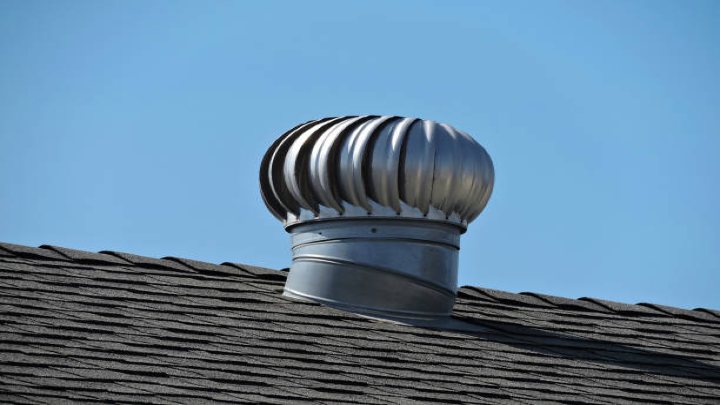
Wind turbine, also known as whirlybird ventilation, is one of the most identifiable and most common types of roof vents. This type of roof vent is dependent on air rather than electricity. As it spins, the hot or humid air seeps out. Although it is one of the most durable types of roof vents, it is also very expensive.
2. Ridge vents
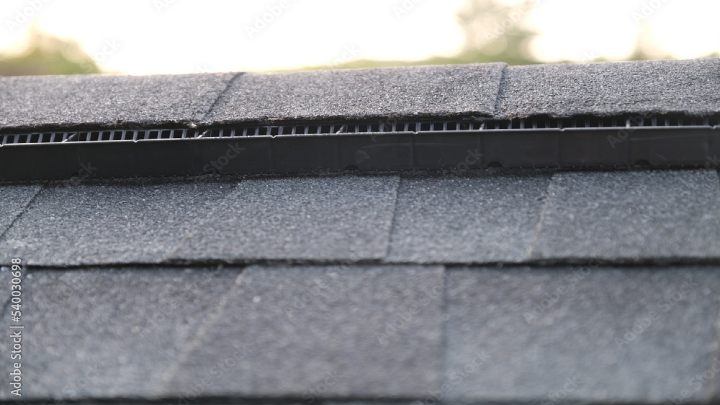
Another very popular type of exhaust vent is the ridge vent. This type of roof vent is designed to sit on a sloped roof’s peak, making it almost invisible to the eye. Ridge vents are the most efficient types of roof vents, but they tend to be difficult to install, and if any part of the ridge is damaged, it compromises the entire system.
3. Box vents
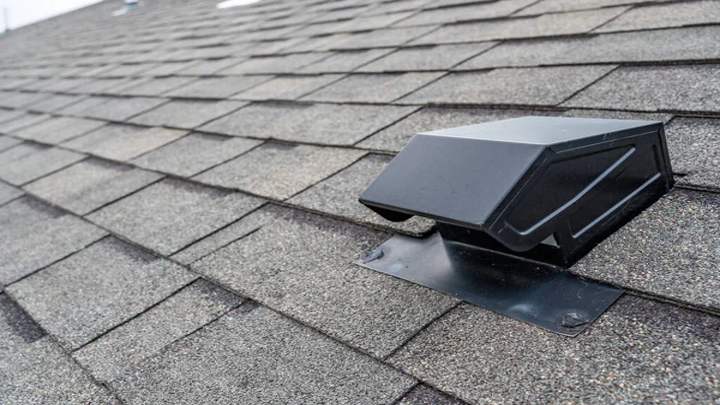
Box vents, also known as Louver Vents are very similar to ridge vents (but not as efficient). However, they look like a small box seating across a roof line. They are ideal for complex roofs; however, this type of vent is susceptible to cracks and damage from hail or high winds
4. Cupola vents
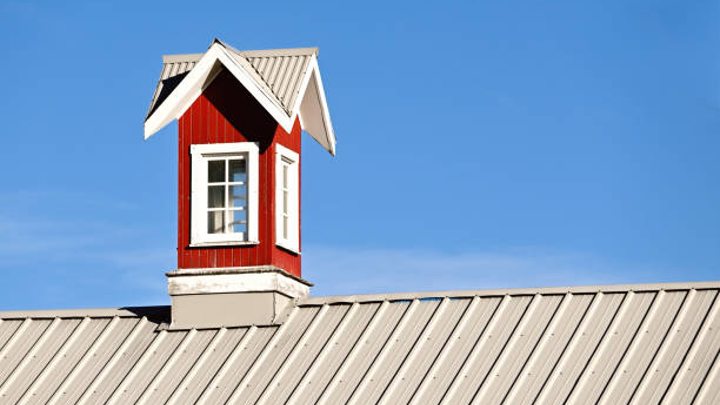
Talk about a roof vent with high curb appeal; the cupola vent is very common in Spanish or Mediterranean home designs. They come in different shapes and sizes and can be a real eye-catcher. However, they come with certain downfalls. They tend to be very costly, require more maintenance, and are very difficult to install.
Types of intake vents
Here are the most popular types of intake vents
1. Gabled vents
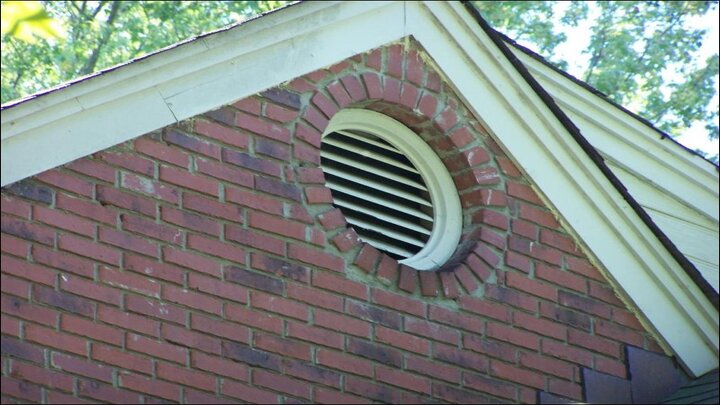
Gabled roof vents are vents installed at the peak of the roof’s gables. They are very efficient but must be reinforced with screens in order to prevent insects from crawling in. Additionally, they do not cover much space unless you have multiple gables.
2. Soffit vents
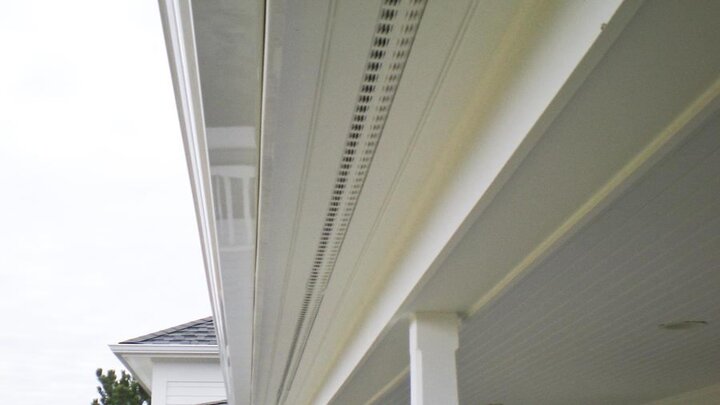
Soffit vents are made of a mesh-like flexible material and are typically installed underneath an eave or under a peak. It is one of the most popular types of intake vents because it is affordable, simplistic, and efficient at facilitating convection.
3. Over-fascia vents
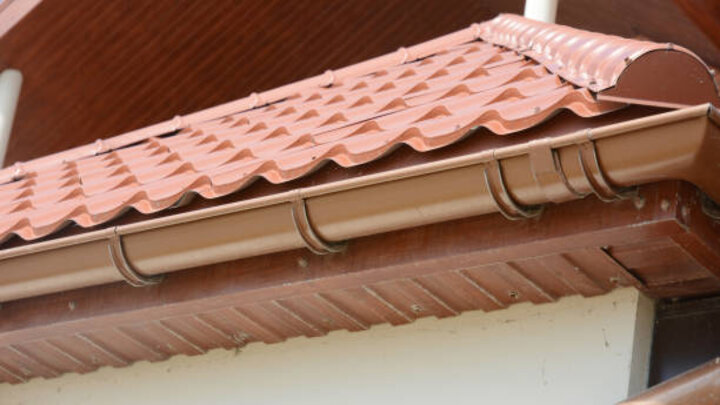
Over-fascia vents, often referred to as just fascia vents, are specifically designed for roofs that do not have sufficiently sized eaves. The basic idea behind this roof system is to allow air intake where the wind usually hits the roof. It is placed at the top of a fascia board and directly above a gutter.
FAQs
Why are roof vents important?
Without a roof vent, you leave the attic to overheat, which can cause cracks in the shingles. Aside from that, it also poses severe health and structural risks.
Can you have too much roof ventilation?
It is important to be cautious about over-ventilation as it can also be a problem. The imminent danger of too much roof ventilation would be an increase in electricity bills. It is advisable to seek the expertise of a professional before having roof vents installed.
How many vents per roof?
The general rule of thumb is one vent per every 300 square feet of attic area.
What happens if a roof is not vented?
The most prominent disadvantage is that the shingles will get very hot and start aging prematurely.
In conclusion
Roof vents are more important than they appear to be. They promote good air circulation in the home, making a home cooler during harsh weather conditions and warmer during colder conditions. There are different types of roof vents and making a choice should be easy for you.
But note that certain combinations of exhaust vents and intake vents work together better. But like other decisions, the type you choose may be dependent on other factors as well. The cost, durability, efficiency, and performance are some examples of these factors.
I hope you enjoyed reading this article. You can also check out this article on the different types of roofs.
Thanks for reading.
2 thoughts on “Roof Vents – Meaning, Types, And Benefits Of Roof Ventilation”
Comments are closed.